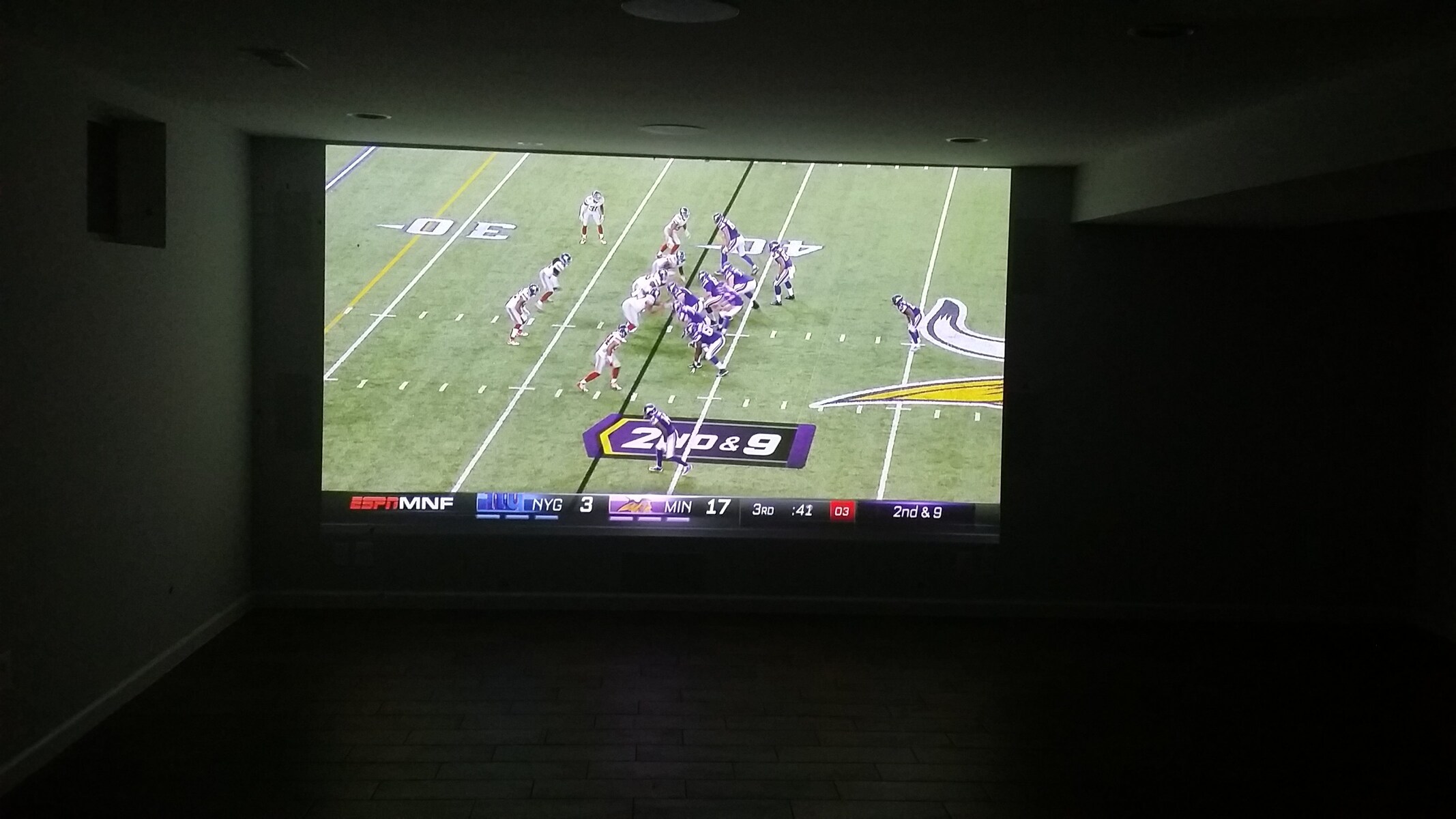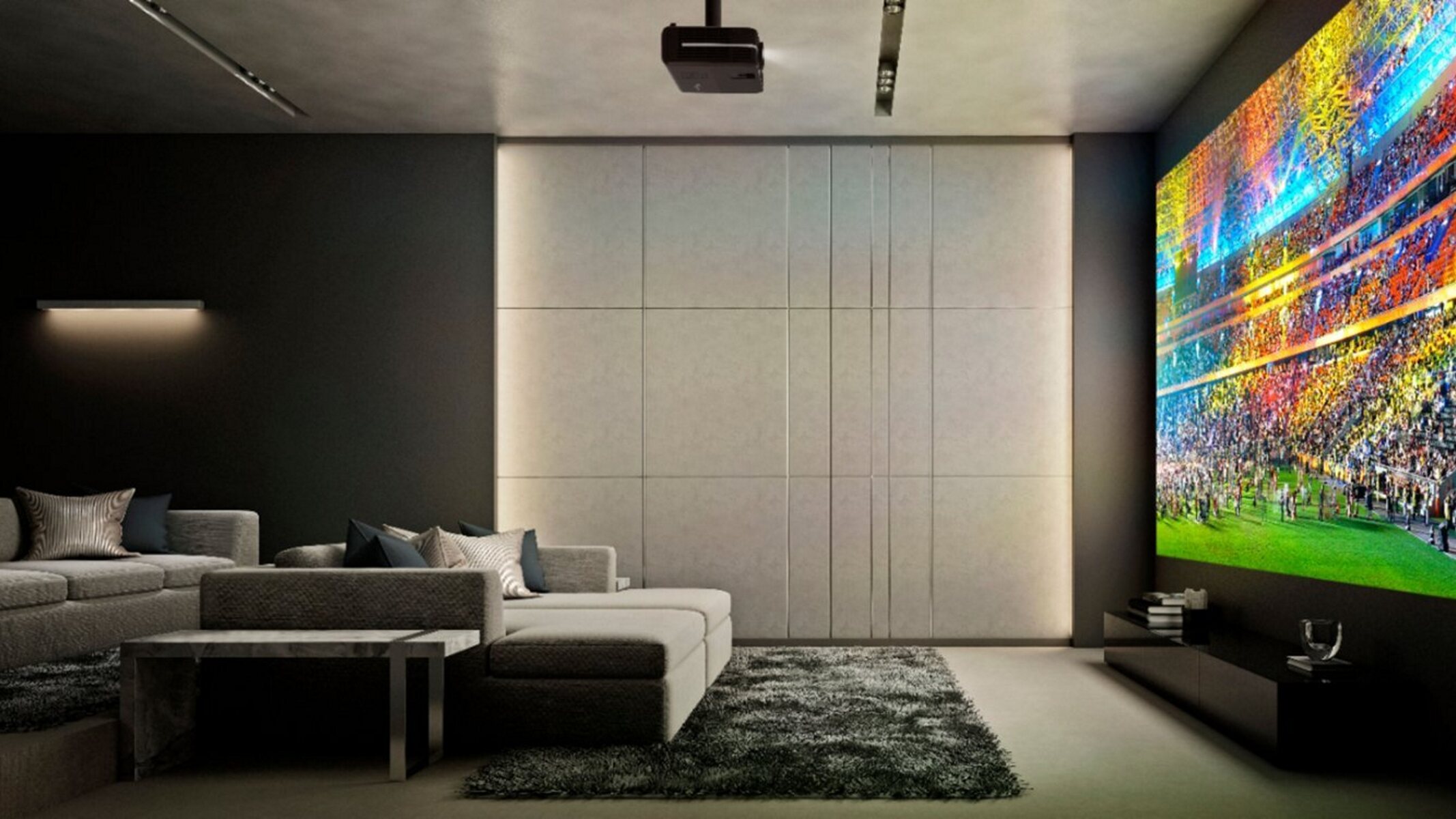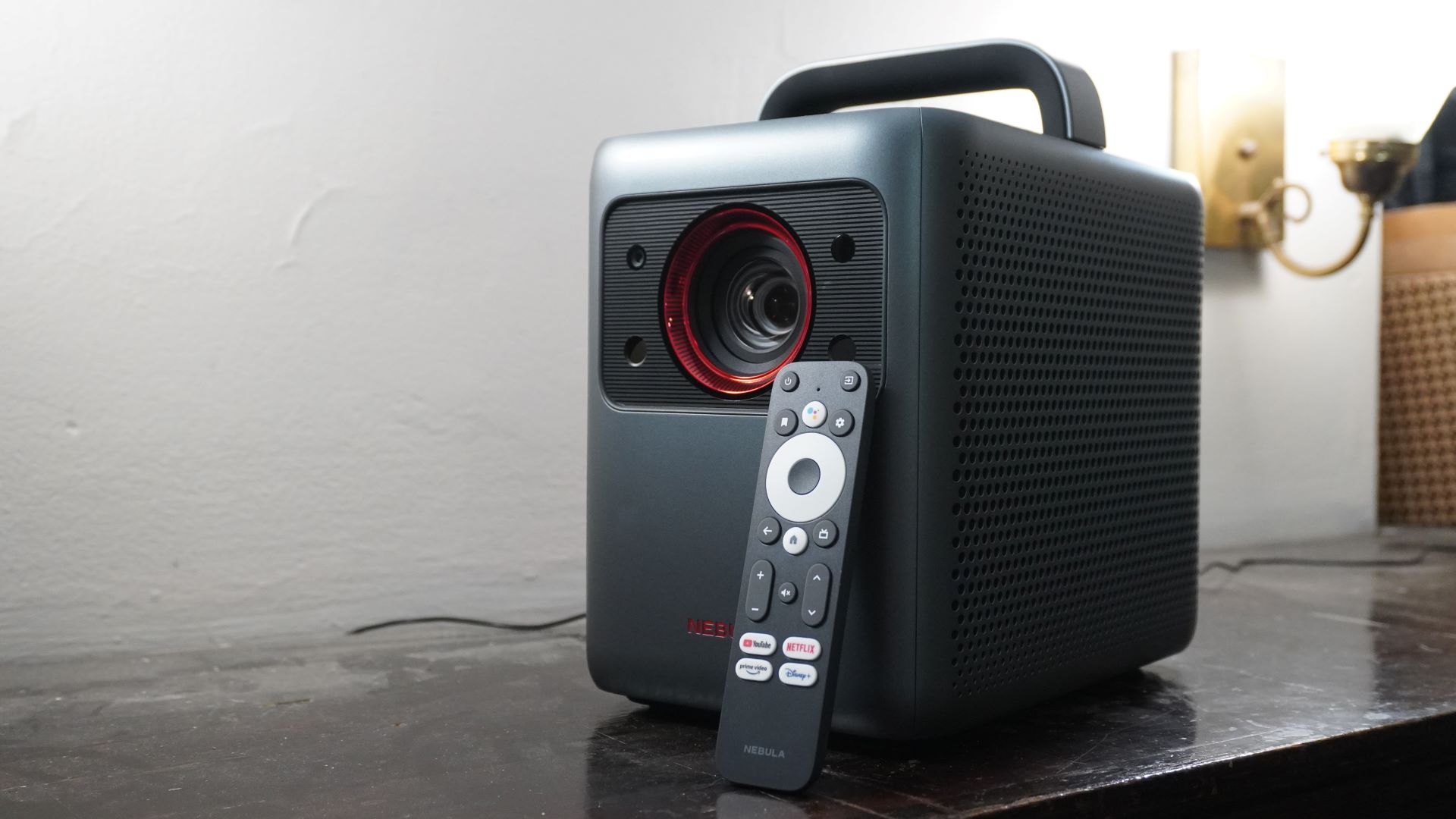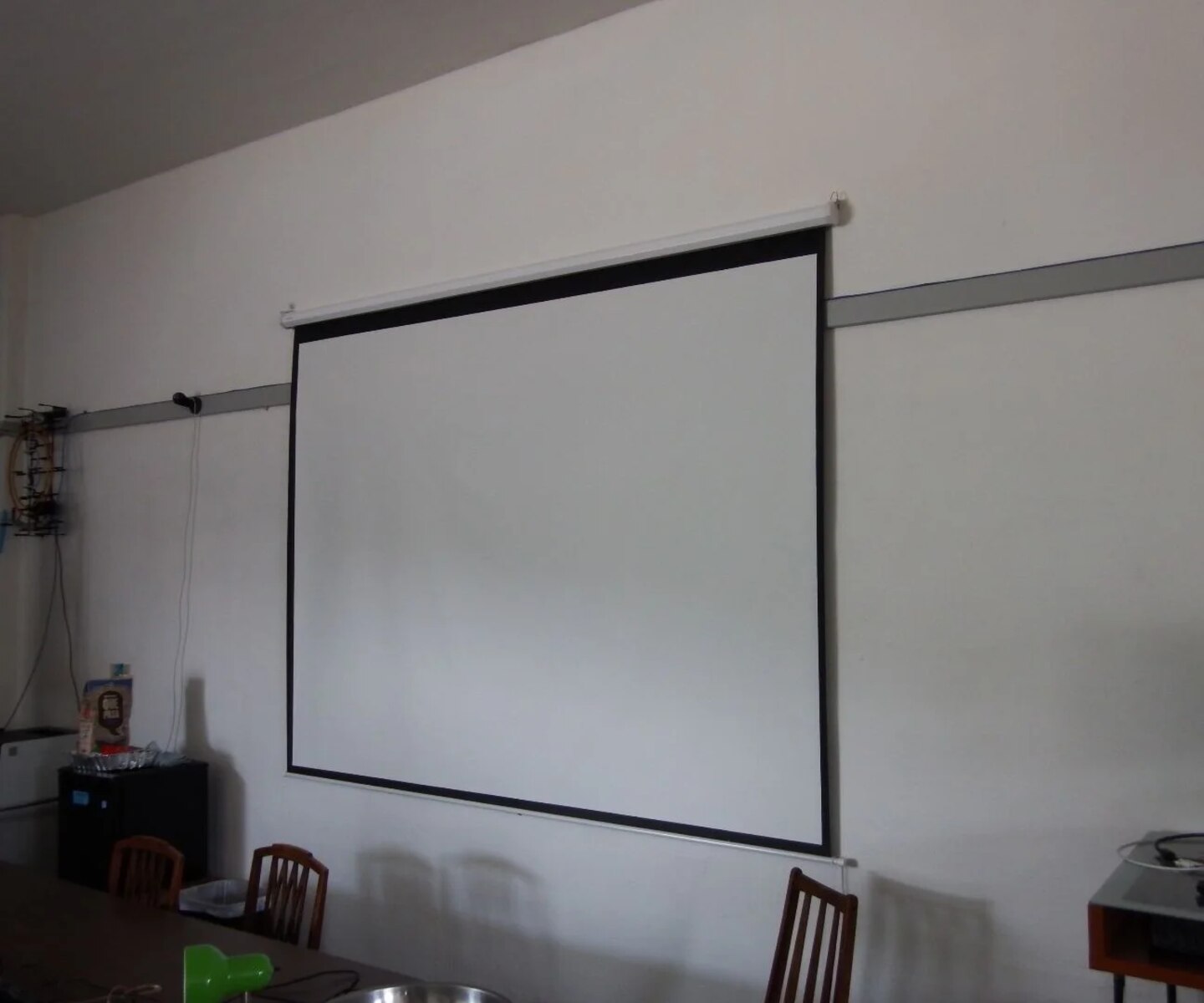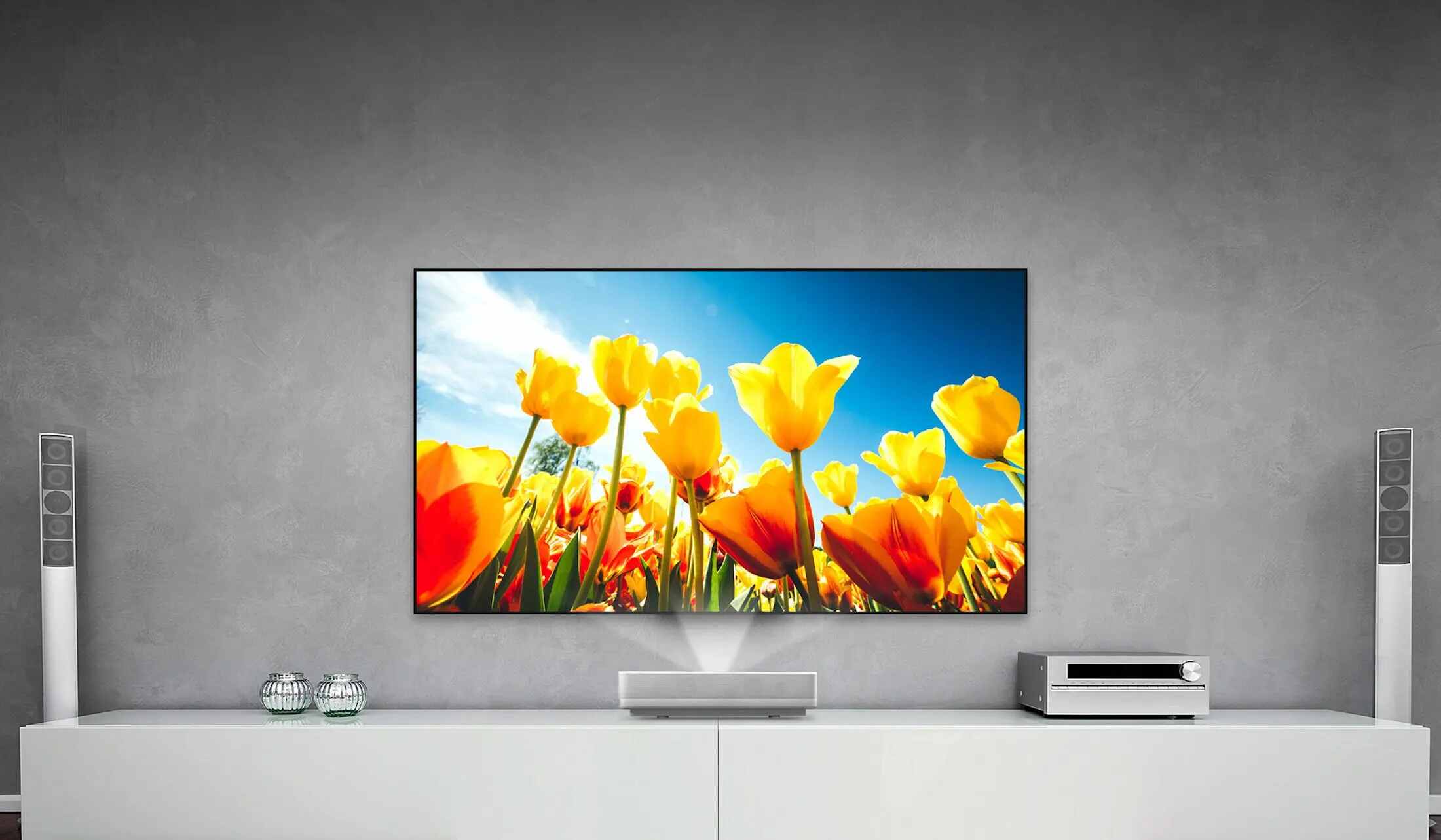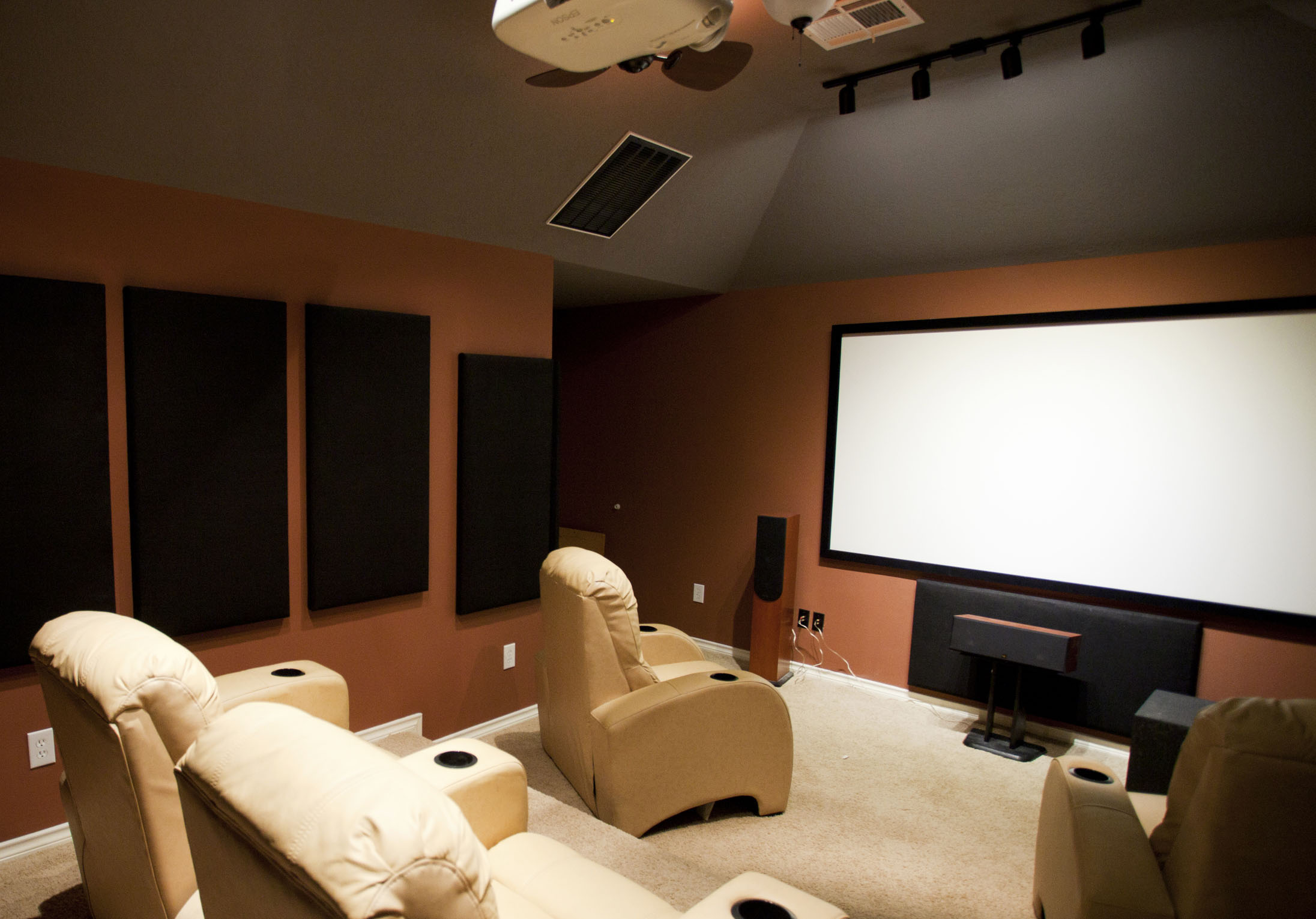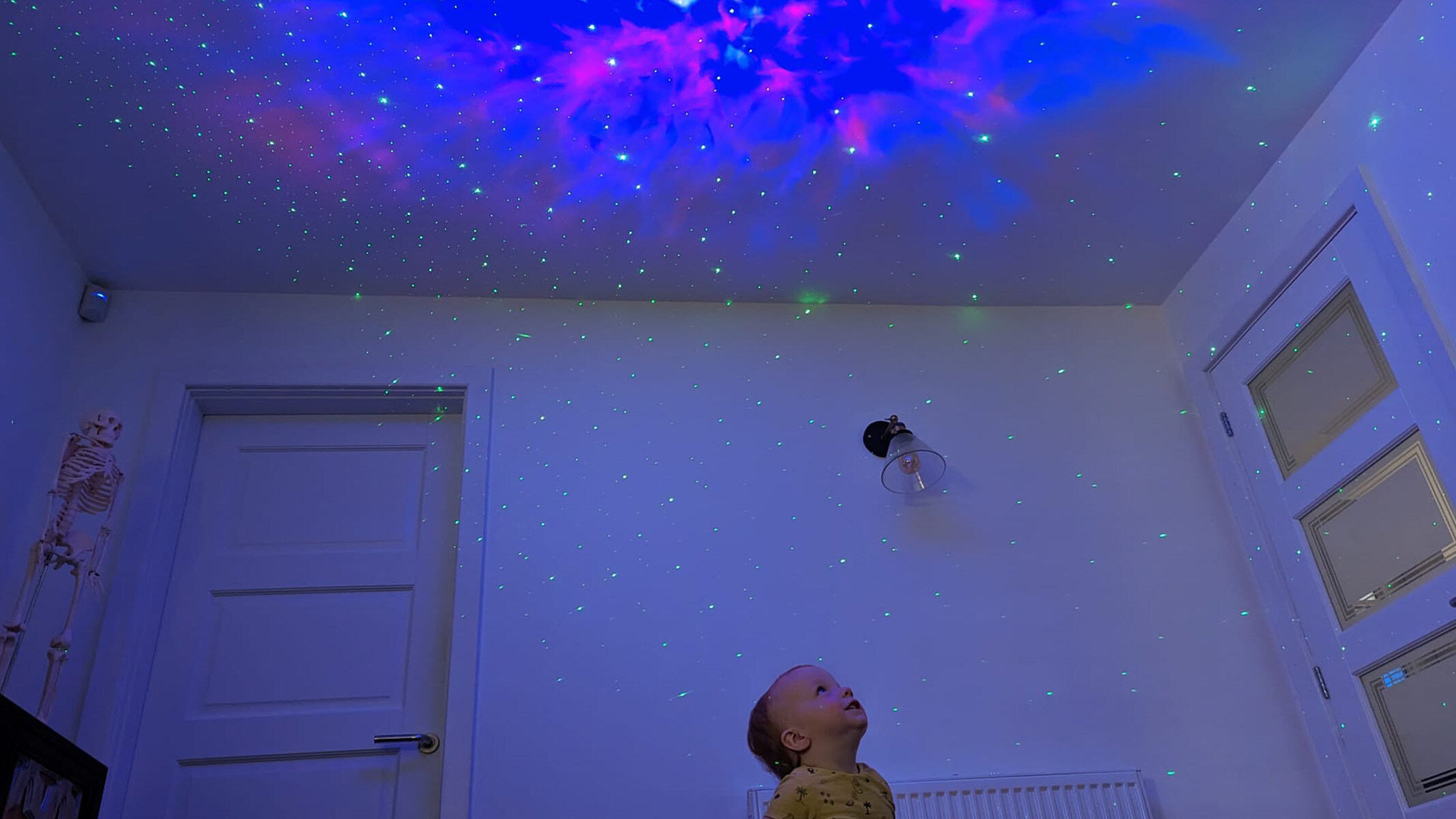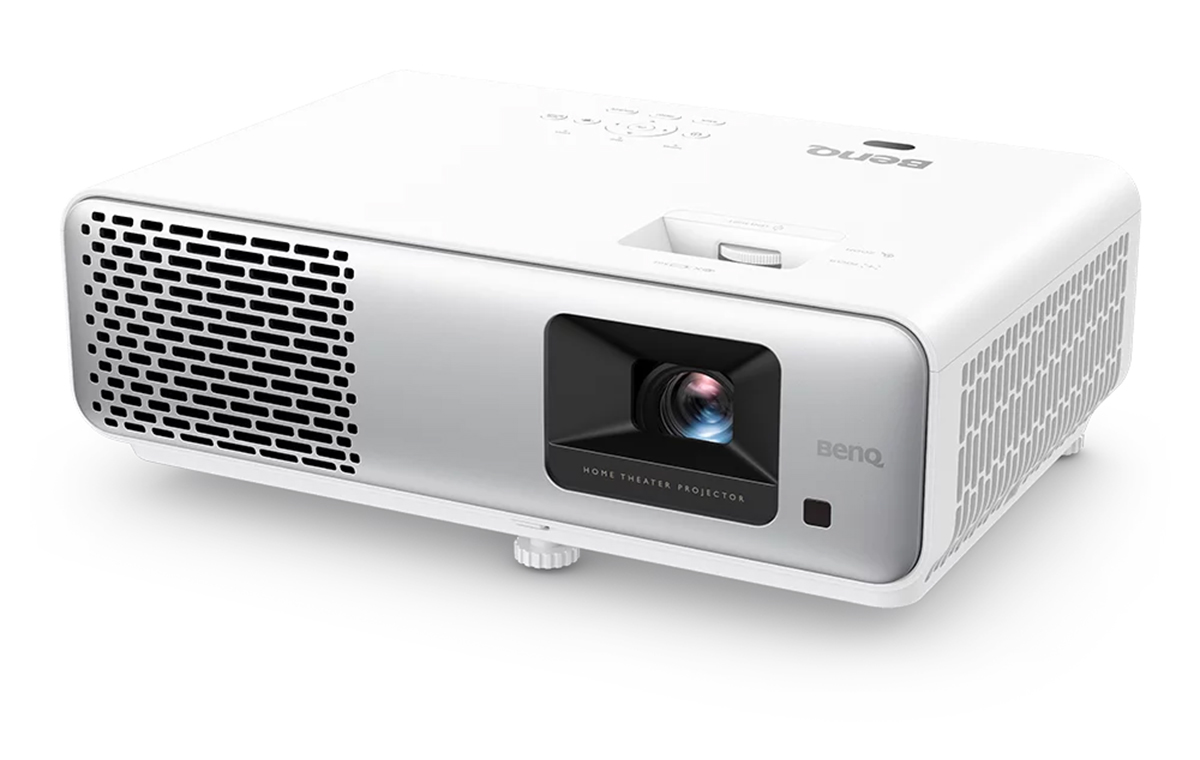Introduction
Welcome to the world of projectors and projection screens! If you are setting up a projector in your home theater, office, or event space, it is important to consider the optimal height for your projection screen. The height placement of the screen can have a significant impact on the overall viewing experience and the quality of the projected image.
When determining the ideal projector screen height, there are several factors that need to be taken into account. These factors include the type of audience, the seating arrangement, the size of the venue, and the overall purpose of the projection. By understanding these considerations, you can ensure that everyone in the audience has a clear and unobstructed view of the projected content.
In this article, we will explore the various factors that need to be considered when determining the height of a projector screen from the floor. We will discuss the appropriate height for a seated audience, a standing audience, adjustable seating arrangements, as well as large venues or auditoriums. By the end of this article, you will have a clear understanding of how high your projector screen should be positioned to optimize the viewing experience for your audience.
Factors to Consider
When determining the height of a projector screen from the floor, there are several key factors that you need to take into consideration. These factors will help you determine the optimal height to ensure a comfortable and enjoyable viewing experience for your audience.
Firstly, the type of audience is an important consideration. Are you setting up the projector screen for a seated audience, a standing audience, or both? The height of the screen will differ depending on whether the audience will be sitting or standing during the presentation or viewing. For a seated audience, it is crucial to position the screen at a height that allows everyone to easily see the content without straining their necks or eyes.
Secondly, the seating arrangement plays a significant role in determining the screen height. If the seating is fixed and the audience will not have the option to adjust their seats, the screen height should be set at a level that ensures clear visibility for all attendees. On the other hand, if the seating is adjustable, it is important to consider various viewing angles and adjust the screen height accordingly to accommodate the different seating positions.
Another factor to consider is the size of the venue. In a large venue or auditorium, the screen height needs to be greater to ensure that the projected image is visible to individuals at the back of the room. The screen should be positioned high enough to provide a clear line of sight for the entire audience, regardless of their seating location.
Additionally, the purpose of the projection should be taken into account. If the content being projected is primarily for informational purposes, such as charts, graphs, or text, the screen height should be set at a level that allows easy readability for everyone in the audience. However, if the projection is for entertainment purposes, such as movies or presentations with multimedia elements, the screen height should be adjusted to create a more immersive viewing experience.
By considering these factors and understanding the specific requirements of your audience and venue, you can determine the optimal height for your projector screen. Now that we have discussed the key factors to consider, let’s move on to exploring the appropriate screen height for different audience scenarios.
Screen Height for Seated Audience
When setting up a projector screen for a seated audience, it is essential to position the screen at a height that allows clear visibility for everyone in the room. The ideal screen height for a seated audience typically depends on the viewing distance and the seating arrangement.
Firstly, consider the viewing distance between the audience and the screen. For optimal viewing comfort, the bottom of the screen should be positioned at eye level when the audience is sitting in their seats. This placement ensures that viewers can easily see the entire projected image without tilting their heads up or down. Moreover, it minimizes the strain on their necks and eyes during extended viewing sessions.
Additionally, the seating arrangement plays a crucial role in determining the screen height. If the audience is seated in a stadium-style arrangement, with elevated rows of seating, the screen should be positioned high enough to provide a clear view for individuals in the back rows. In this case, consider the sightlines of the seats closest to the screen and adjust the height accordingly to ensure unobstructed visibility for all attendees.
On the other hand, in a theater-style seating arrangement where the seats are on the same level, the screen height can be set slightly lower. Aim to position the bottom of the screen at a height that is comfortable for individuals sitting in the middle section of the audience. This height will typically allow clear visibility for those in the front and back rows as well.
It’s important to note that the screen height may also be influenced by factors like the size of the projection room and any potential obstructions such as columns. Take these aspects into consideration when determining the optimal screen height for a seated audience.
By positioning the screen at the correct height for a seated audience, you can ensure that everyone has an unobstructed view of the projection, resulting in an enjoyable and immersive viewing experience. Now, let’s move on to discussing the screen height for a standing audience.
Screen Height for Standing Audience
When setting up a projector screen for a standing audience, the key consideration is to position the screen at a height that allows clear visibility for everyone attending the event. Unlike a seated audience, a standing audience requires a different screen height placement to ensure optimal viewing.
The first step in determining the screen height for a standing audience is to consider the average eye level of the attendees. The bottom of the screen should be positioned at or slightly above the average eye level, ensuring that the projection is easily visible without causing strain to the neck or eyes.
In most cases, a standing audience will be located closer to the screen compared to a seated audience. Therefore, the screen height can be set slightly lower to accommodate the shorter viewing distance. Aim to position the bottom of the screen at a height that allows the viewers to comfortably view the entire projected image without having to tilt their heads upwards excessively.
Additionally, when setting up the screen for a standing audience, it is crucial to consider the viewing angle. The screen should be angled slightly upwards to ensure that individuals at the back of the crowd can see the projection clearly. This upward angle also helps to minimize the impact of any obstructions or potential line-of-sight issues.
Furthermore, it’s important to take into account any potential distractions or obstacles in the surrounding environment. Ensure that the screen height is adjusted to avoid any physical barriers that may obstruct the view of the projection. By doing so, you can guarantee an unobstructed and immersive viewing experience for the standing audience.
By positioning the screen at the appropriate height for a standing audience, you can ensure that everyone attending the event can enjoy a clear and unhindered view of the projected content. Now, let’s explore the screen height considerations for venues with adjustable seating.
Screen Height for Adjustable Seating
When setting up a projector screen for a venue with adjustable seating, it is crucial to take into account the varying seating positions and angles of the audience. Adjusting the screen height accordingly will help ensure optimal visibility and a great viewing experience for all attendees.
Firstly, it’s important to consider the different seating positions that might be available. In venues with adjustable seating, audience members may have the option to recline or sit up straight. The screen height should be set so that it accommodates both positions comfortably. This often means positioning the screen at a height that is slightly higher than the eye level of the audience when seated in a reclined position.
Additionally, consider the viewing angles from different sections of the seating area. If the seats have a wide viewing angle, it may be necessary to raise the screen height to ensure that everyone has a clear line of sight to the projection. Experimenting with different screen heights and taking into account the sightlines from various seating positions can help determine the optimal screen height for adjustable seating arrangements.
Another factor to consider is the proximity of the seating to the screen. If the adjustable seating allows for closer proximity to the screen, you may need to adjust the screen height to compensate for the shorter viewing distance. Positioning the bottom of the screen at eye level when the audience is sitting up straight can provide a comfortable viewing experience for those in the front rows.
Lastly, keep in mind any potential obstructions or distractions that may affect the viewing experience. Avoid positioning the screen too low or too high if there are physical barriers or obstacles that could obstruct the view of the projection. Ensure that the screen height is adjusted to provide a clear and unobstructed view for all attendees.
By considering the varying seating positions, viewing angles, and proximity to the screen, you can determine the optimal screen height for venues with adjustable seating. Now, let’s delve into the screen height considerations for large venues or auditoriums.
Screen Height for Large Venue or Auditorium
When setting up a projector screen for a large venue or auditorium, careful consideration must be given to ensure optimal visibility for all attendees throughout the space. With a larger seating capacity and potentially greater distance between the audience and the screen, specific adjustments need to be made to accommodate the size and layout of the venue.
Firstly, the screen height for a large venue or auditorium should be set at a level that ensures clear visibility for individuals sitting in the back rows. Since the distance between the back rows and the screen is greater, positioning the screen too low would result in obstruction and make it difficult for the audience in the back to fully view the projection. Therefore, the bottom of the screen should be raised to provide a clear line of sight for everyone, regardless of their seating location.
Considering the size of the venue, it is recommended to use larger screens to ensure the projected image is visible from all corners of the space. A larger screen will also help in maintaining image quality and legibility, especially when projecting detailed visuals or text-heavy presentations.
Furthermore, a key aspect to take into consideration in large venues or auditoriums is the potential presence of obstructions. These include pillars, columns, or even the staging setup itself. Careful positioning of the screen, taking into account these obstructions, is crucial to avoid blocking the view of any of the audience members. Adjust the screen height and location accordingly to provide an unobstructed view for everyone in the venue.
Additionally, consider the viewing angles from different sections of the venue. In large venues, the seating may be spread out over a wide area, resulting in various viewing angles. The screen should be positioned at a height that allows for optimal viewing from different sections, minimizing the need for individuals to strain their necks or shift their positions to see the projection clearly.
By considering the specific requirements of a large venue or auditorium, such as raising the screen height to accommodate the distance and adjusting for potential obstructions, you can ensure that all attendees have a clear view of the projection, no matter where they are seated.
Now that we have explored the screen height considerations for large venues or auditoriums, let’s move on to discussing some common mistakes to avoid when determining the screen height for any setting.
Common Mistakes to Avoid
When determining the screen height for a projector, it is important to be aware of common mistakes that can impact the viewing experience. By avoiding these mistakes, you can ensure that your audience has an optimal and enjoyable viewing experience.
One common mistake is positioning the screen too low for a seated audience. Placing the screen too low can result in viewers having to tilt their heads upwards, causing strain on their necks and discomfort. It is important to position the bottom of the screen at eye level when the audience is seated to ensure a comfortable viewing experience.
Conversely, positioning the screen too high can obstruct the view for both seated and standing audiences. This mistake may occur in venues with fixed seating arrangements where the screen is mounted too high for clear visibility from the back rows. It is crucial to consider the sightlines of all seating positions and adjust the screen height accordingly.
Avoiding an improper viewing angle is another common mistake. A screen that is not angled correctly can result in distorted images or difficult viewing for certain sections of the audience. It is important to ensure that the screen is tilted or angled slightly upwards to provide a clear line of sight for viewers, especially those at the back of the audience.
Underestimating the impact of obstructions is another common mistake. Columns, speakers, or other physical obstructions in the venue can block the view of the projected content. It is essential to consider the presence of any potential obstructions and adjust the screen height and placement to avoid any blockages in the line of sight.
Ignoring the viewing distance can also lead to suboptimal screen height. Different audience sizes and seating layouts require adjustments in screen height to accommodate varying viewing distances. Failing to consider the appropriate screen height based on viewing distance can result in some viewers being too far or too close to comfortably see the projection.
Lastly, failing to account for the specific needs of the venue and audience can lead to mistakes in determining the screen height. Each setting is unique, and it is crucial to consider the characteristics of the venue, such as seating arrangements, venue size, and any special requirements, to ensure the optimal screen height for a seamless viewing experience.
By being aware of and avoiding these common mistakes, you can ensure that the projector screen is positioned at the correct height for the best possible viewing experience. Now, let’s conclude the article.
Conclusion
Setting the correct height for a projector screen is crucial in ensuring an optimal viewing experience for your audience. By considering factors such as the type of audience, seating arrangement, venue size, and specific needs of the projection, you can determine the perfect screen height.
For a seated audience, position the screen at eye level to avoid strain on the neck and eyes. Stadium-style seating may require a higher screen placement to ensure visibility from the back rows, while theater-style seating can have a slightly lower screen height.
For a standing audience, position the screen at or slightly above eye level, considering the average height. Angle the screen upwards to ensure clear visibility, especially for individuals at the back of the crowd.
In venues with adjustable seating, adjust the screen height to accommodate different seating positions and angles. Consider reclined and sitting-up positions, as well as the proximity to the screen.
For large venues or auditoriums, raise the screen height to ensure visibility for individuals at the back. Use larger screens and account for any potential obstructions or distractions.
Avoid common mistakes, such as positioning the screen too high or low, improper viewing angles, ignoring obstructions, underestimating viewing distance, and neglecting the specific needs of the venue and audience.
By carefully considering these factors and avoiding common mistakes, you can ensure that your projector screen is positioned at the optimal height for a clear and enjoyable viewing experience for all.







